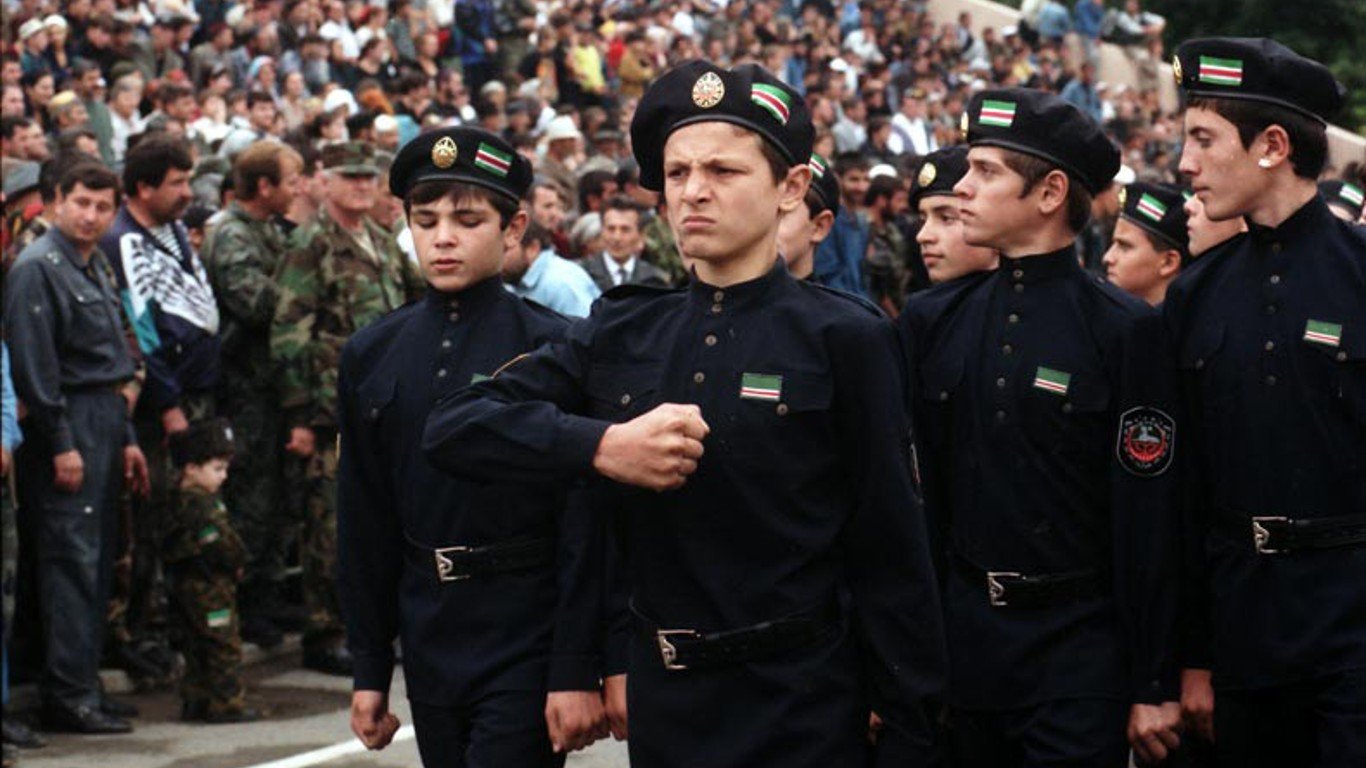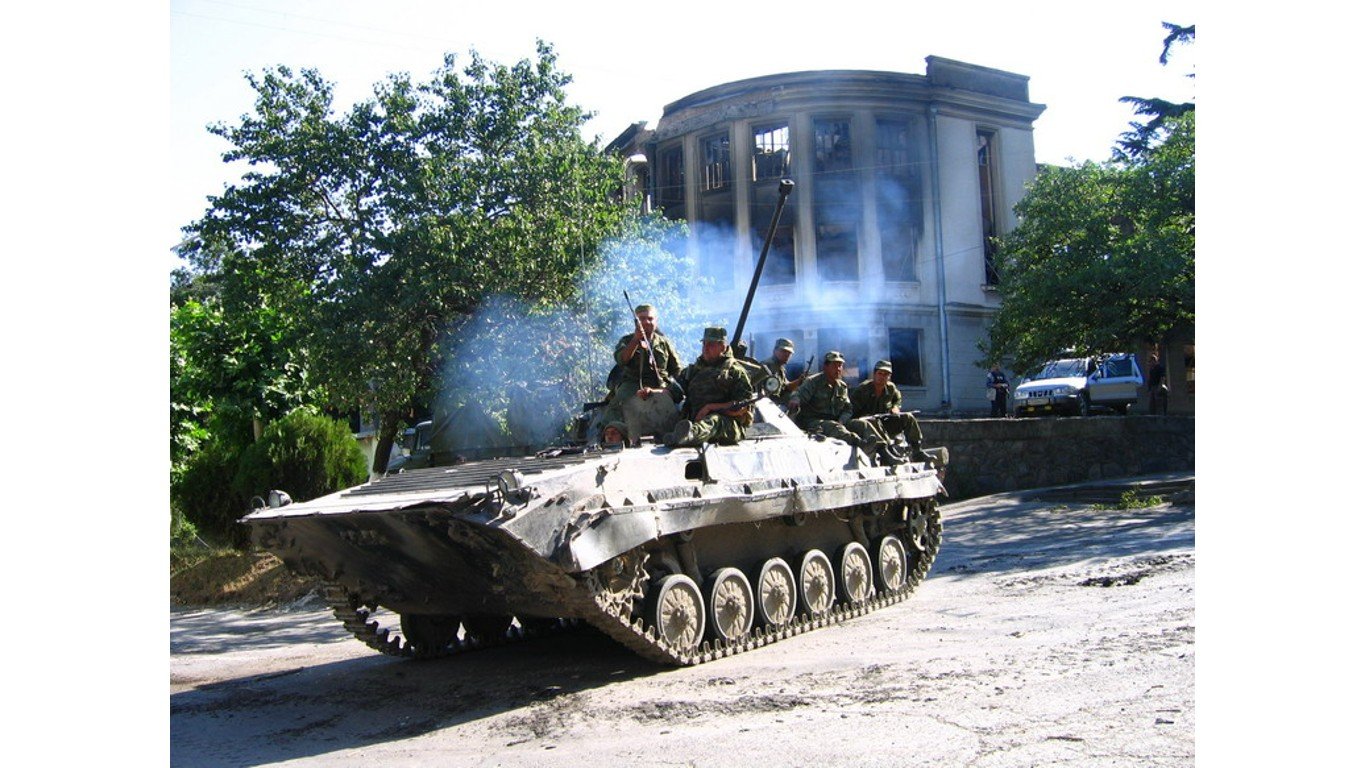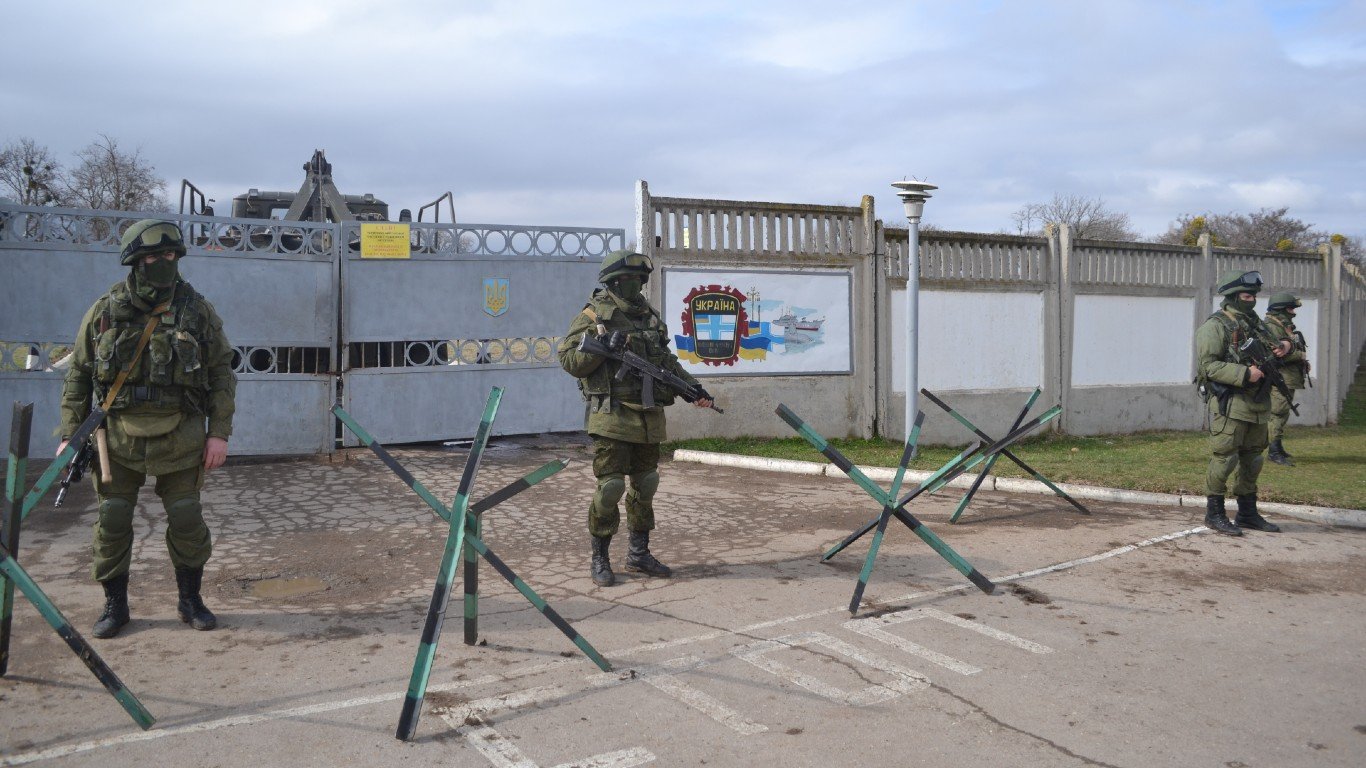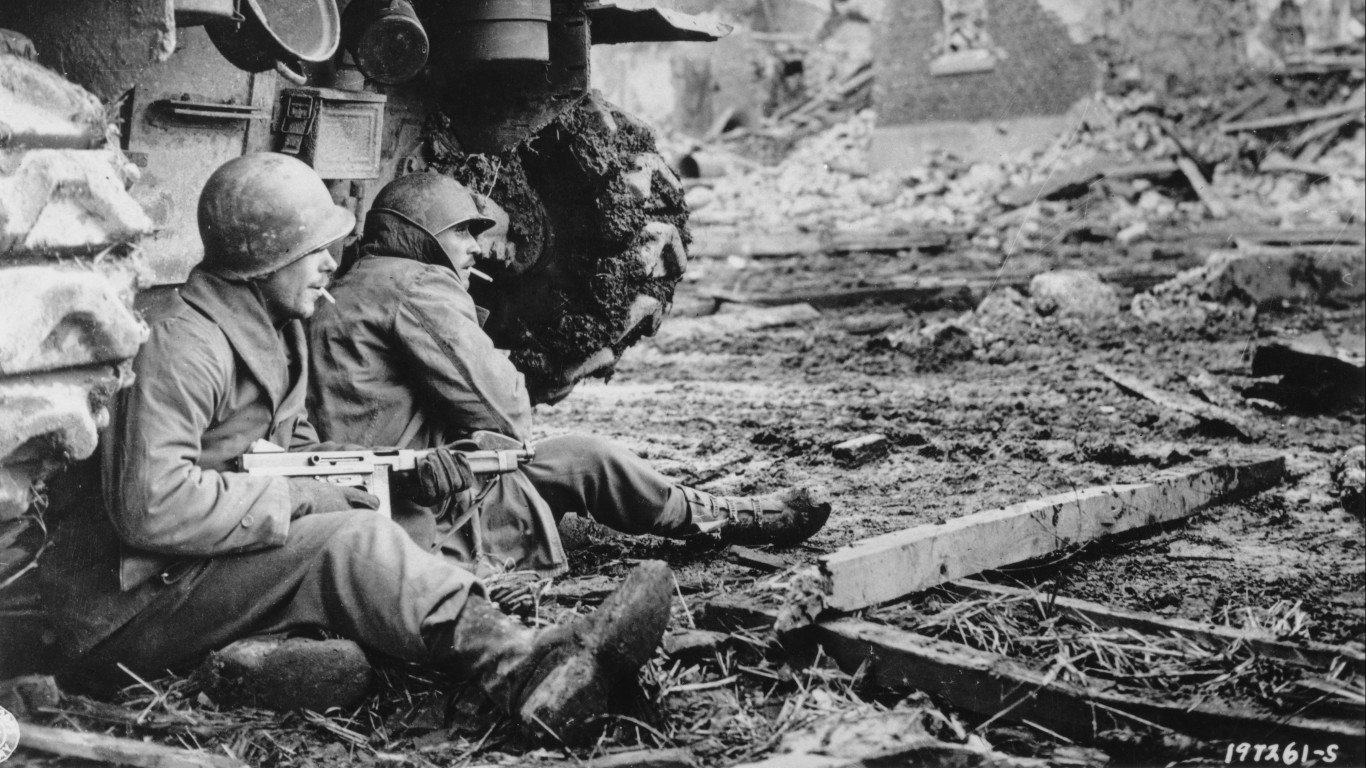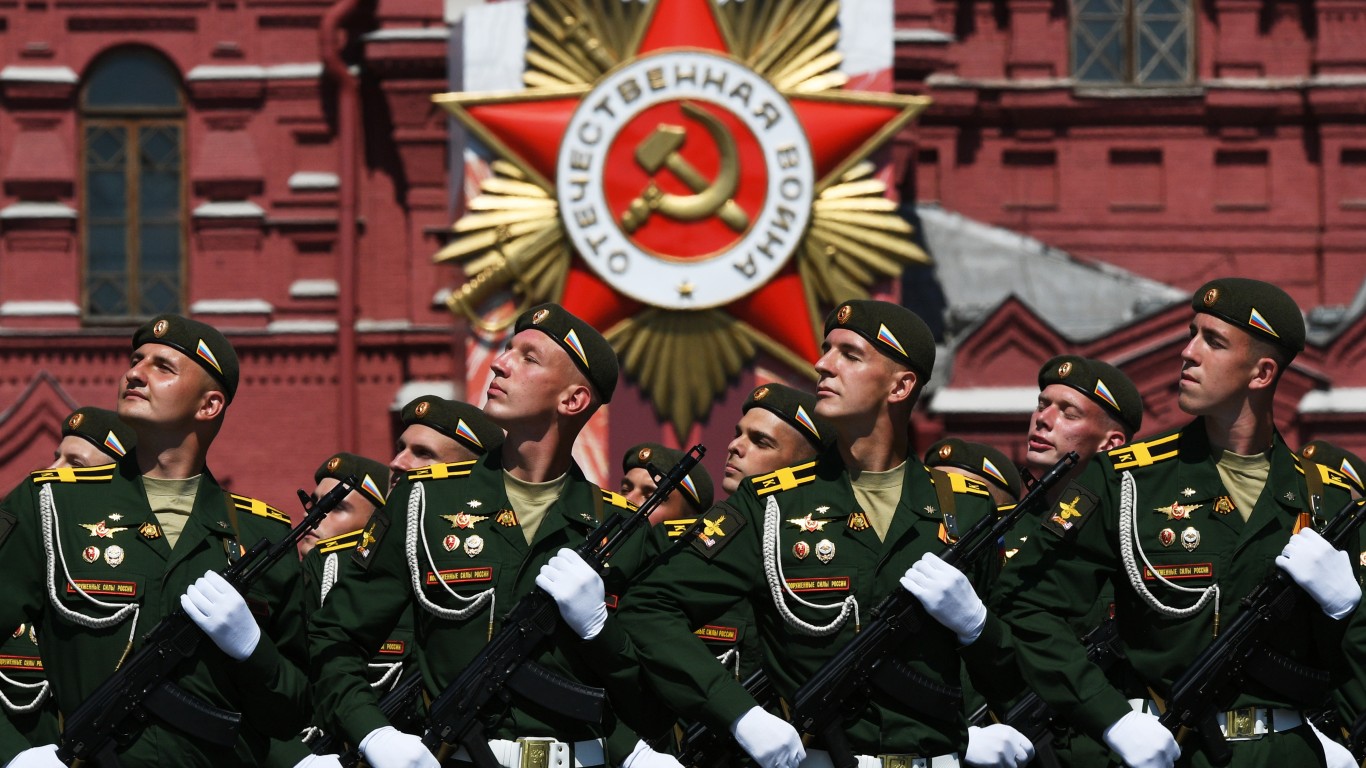

The first anniversary of Russia’s Invasion of Ukraine, which began in February 2022, approaches. The Ukraine engagement, which has become a proxy battle between Russia and its Western enemies, is far from the first major war Russia has found itself in during modern times. The Soviet Union, which was created in the wake of bloodshed, was for most of its tenure involved in warfare. Since the fall of the Berlin Wall, the Russian Federation has been in a number of wars as well, with the invasion of Ukraine being only the most recent chapter of violence in the world power’s history.
To compile a list of the modern Russian wars, 24/7 Wall St. reviewed information on historical military conflicts in Russia and the Soviet Union from the 2014 encyclopedia “Russia at War: From the Mongol Conquest to Afghanistan, Chechnya, and Beyond,” edited by Timothy C. Downling. Only military conflicts that occurred after the Russian Revolution of 1917, and are considered significant events in the timeline of Russian military history, were included.
The Union of Soviet Socialist Republics came into being in 1922. At its height, the Soviet Union covered 8.6 million square miles, or one-sixth of the Earth’s land surface. Present-day Russia remains the biggest country in the world, and one of the most ethnically diverse. It also has one of the largest military forces in the world. (These are the countries with the largest militaries.)
Russia’s sheer physical size, its history of expansionism, and its communist ideology of exporting revolution to other countries has brought it into conflict with neighboring nations.
Since 1917, many of its wars have involved conflicts with neighbors such as Poland, Chechnya, Georgia, Ukraine, Afghanistan, and China.
When it was the Soviet Union, its most protracted struggle was with the West, an ideological confrontation known as the Cold War that lasted for the entirety of its existence. During this time, the Soviet Union imposed its will on Berlin and Hungary by military force when they rebelled against communist control. In other areas of the world, the Soviet Union engaged in proxy wars with the West by supplying military aid and medical supplies to allies in North Korea and North Vietnam.
Much of Russia’s modern history, culture, and its destiny have been defined by its war with Nazi Germany. Russia was invaded by Germany on June 22, 1941, and the conflict cost the lives of as many as 27 million people, most of them civilians. Called “The Great Patriotic War,” Soviet Russia emerged triumphant and became one of the world’s superpowers. (These are the wars that killed the most people in history.)
Click here to see 20 wars Russia has fought since 1917
To compile a list of the modern Russian wars, 24/7 Wall St. reviewed information on historical military conflicts in Russia and the Soviet Union from the 2014 encyclopedia “Russia at War: From the Mongol Conquest to Afghanistan, Chechnya, and Beyond,” edited by Timothy C. Downling. Only military conflicts that occurred after the Russian Revolution of 1917, and are considered significant events in the timeline of Russian military history, were included.
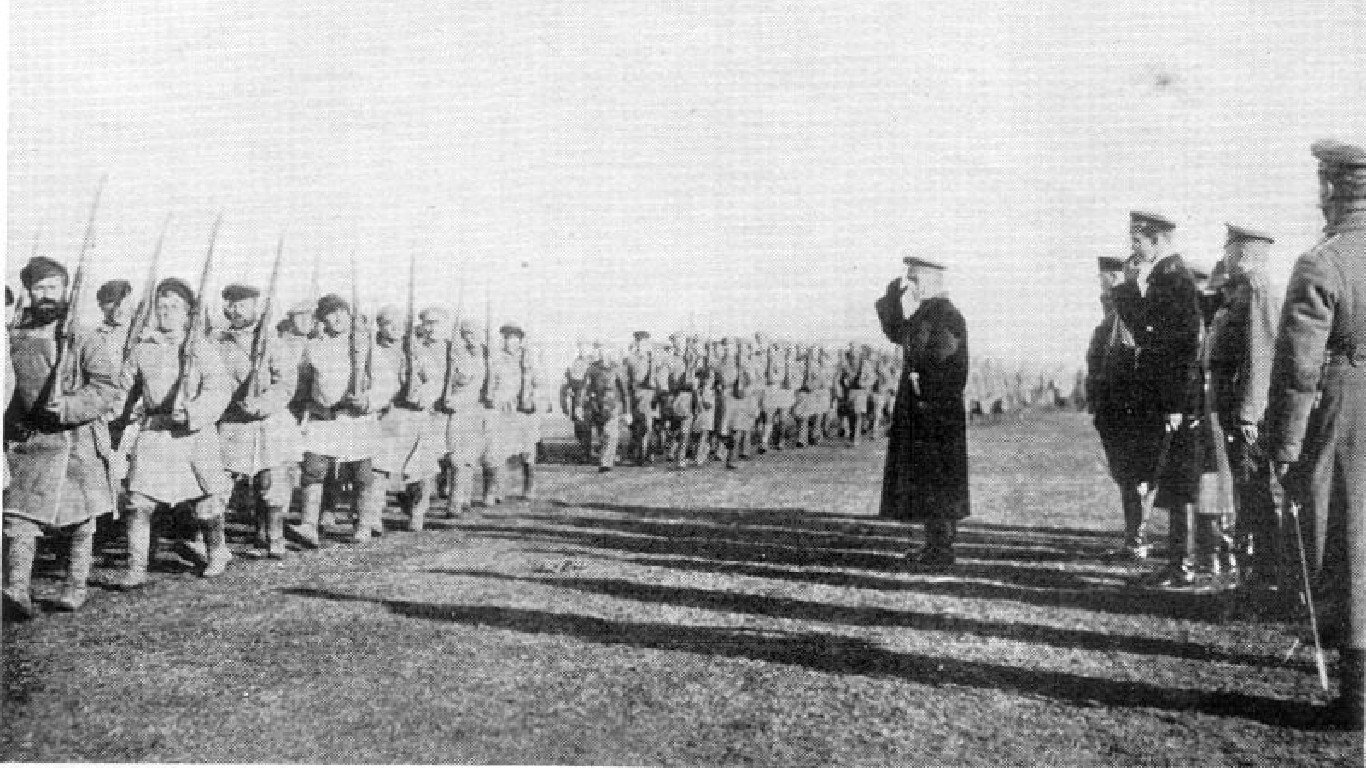
20. Russian Civil War
> Year(s): 1917-1922
After Tsar Nicholas II was deposed in the Russian Revolution, a civil war erupted between the Bolshevik communists, or Red Russians, and the Mensheviks, or White Russians. Despite help from Western countries such as Great Britain and the United States, the White Russians lost, and the communists gained control of Russia and held it for almost 70 years. As many as 10 million people died during the conflict through combat, disease, malnutrition, and execution.
[in-text-ad]
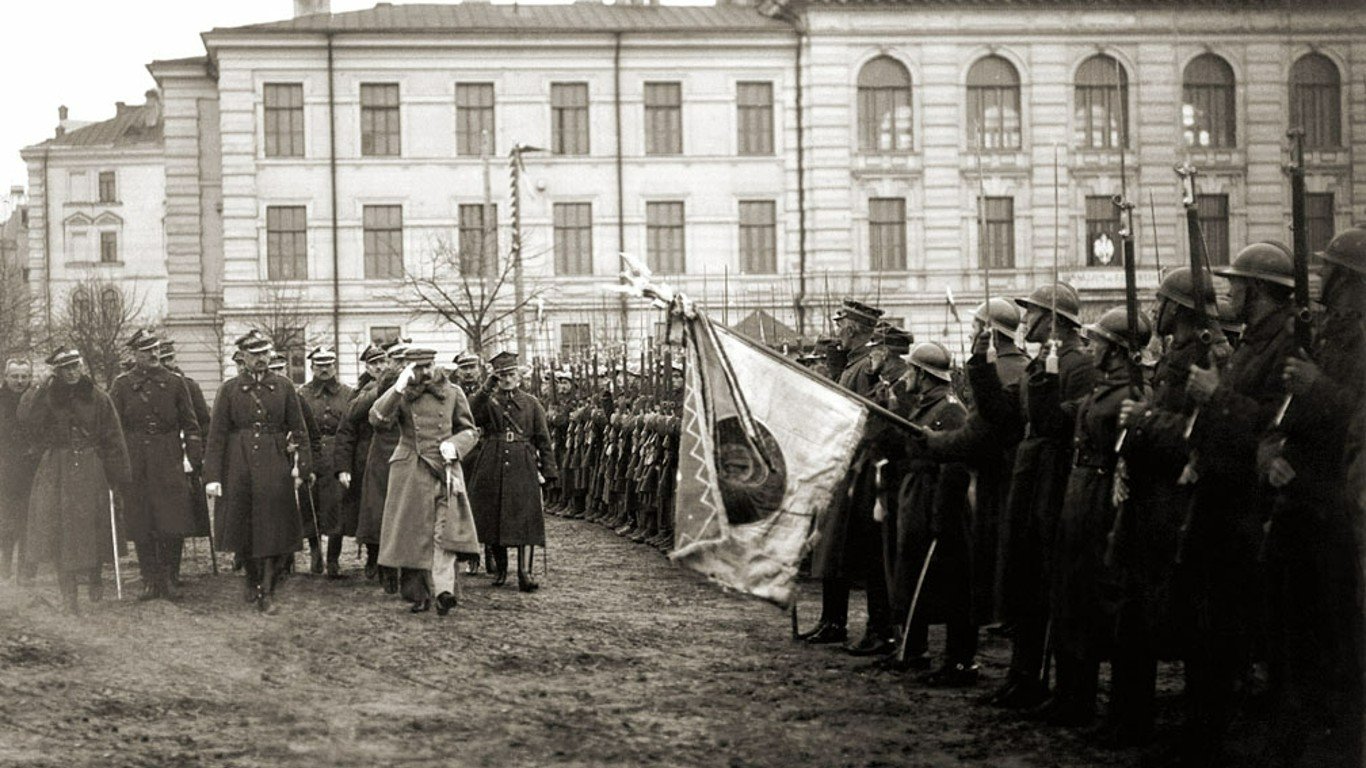
19. Russo-Polish War
> Year(s): 1919-1921
During the chaos of the Russian Civil War, a conflict developed between Russia and Poland. After World War I, German armies in Eastern Europe began to withdraw from the western part of the former Russian Empire, parts of which would become the new Polish state. As the German army withdrew, the Red Army tried to occupy the territory. The Poles objected and took up arms against the Russians.
After Russia took territory gained by the Poles early in the war, the Polish side, which included Lithuanian and Ukrainian allies, and Western advisers, gained needed supplies and drove the Russians back into Russia. The Treaty of Riga was concluded on March 18, 1921, with large sections of what is now Belarus and Ukraine ceded to Poland. Soviet leader Vladimir Lenin had hoped to spread revolution through Poland into Germany and his strategy failed.
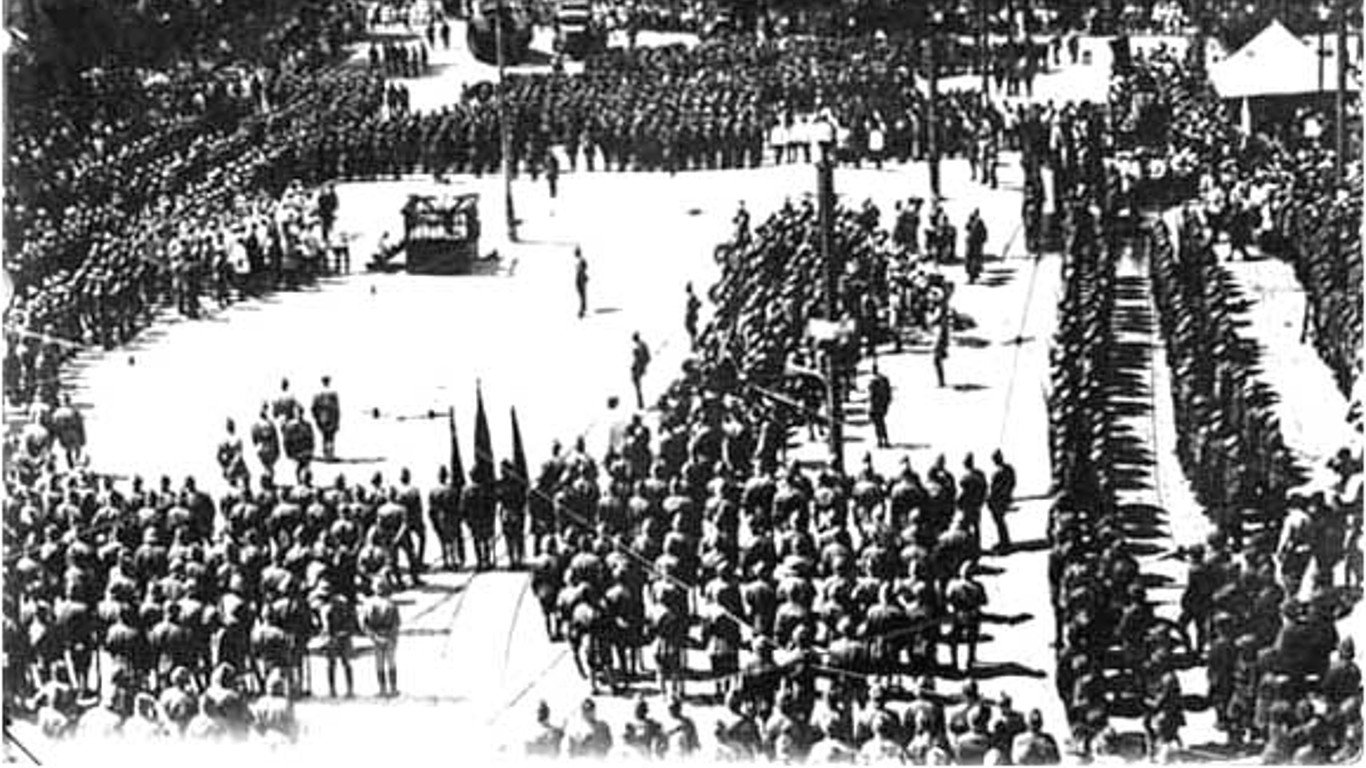
18. Soviet Invasion of Georgia
> Year(s): 1921
Georgia, located in the Caucasus region bordering the Black Sea, enjoyed a very brief period of independence after the Russian Revolution toppled the Romanov dynasty in 1917. The Bolshevik-led revolution pushed into Georgia under the pretext that the Red Army was supporting a peasant and workers revolution. Two Georgian-born Soviet leaders â Joseph Stalin and Grigoriy (Sergo) Ordzhonikidze â strongly supported the invasion. After heavy fighting, Georgia became one of the republics of the Soviet Union.
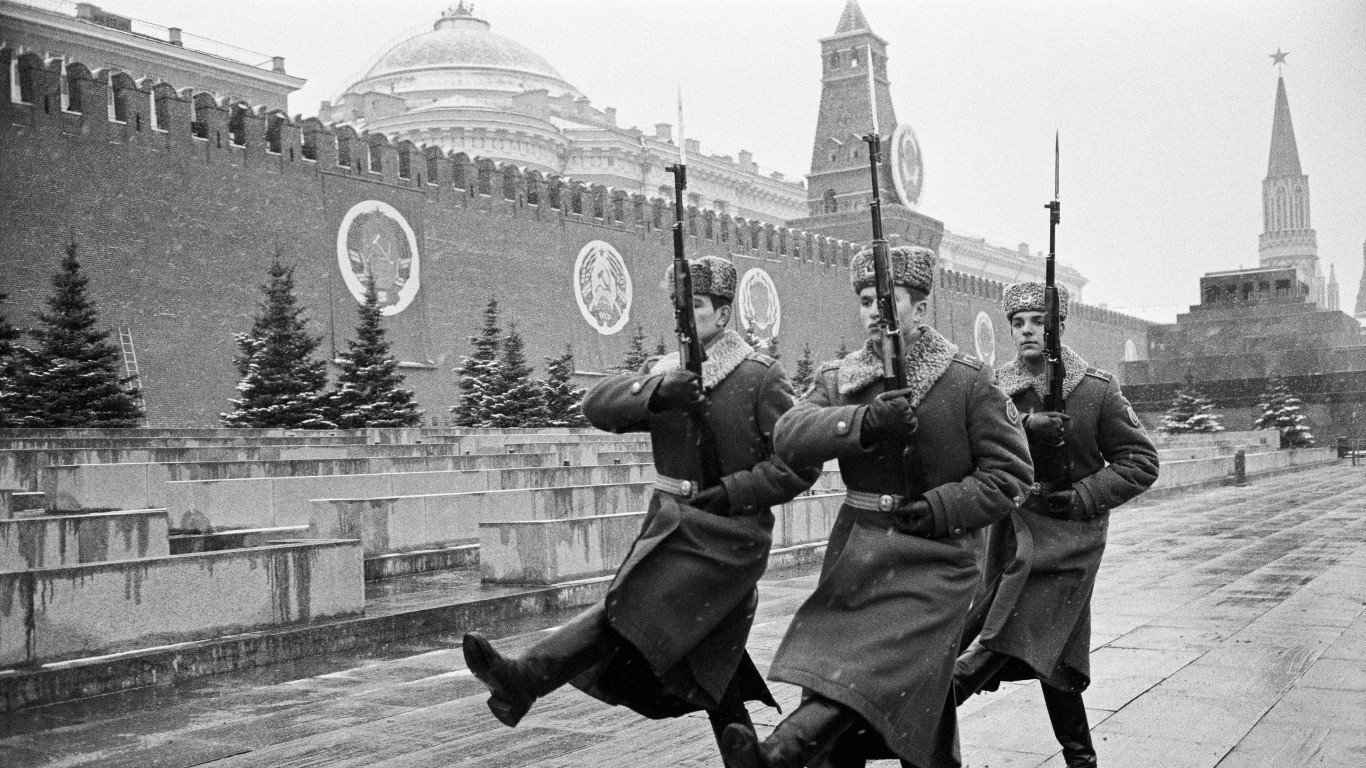
17. Cold War
> Year(s): 1924-1991
After the communists took over Russia and created the Soviet Union, it was their aim to spread revolution to other parts of the world. For almost 70 years, the Soviet Union and its allies and the West, led by the United States, confronted each other in a series proxy wars around the globe known as the Cold War. The conflict ended in 1991 with the collapse of the Soviet Union.
[in-text-ad-2]
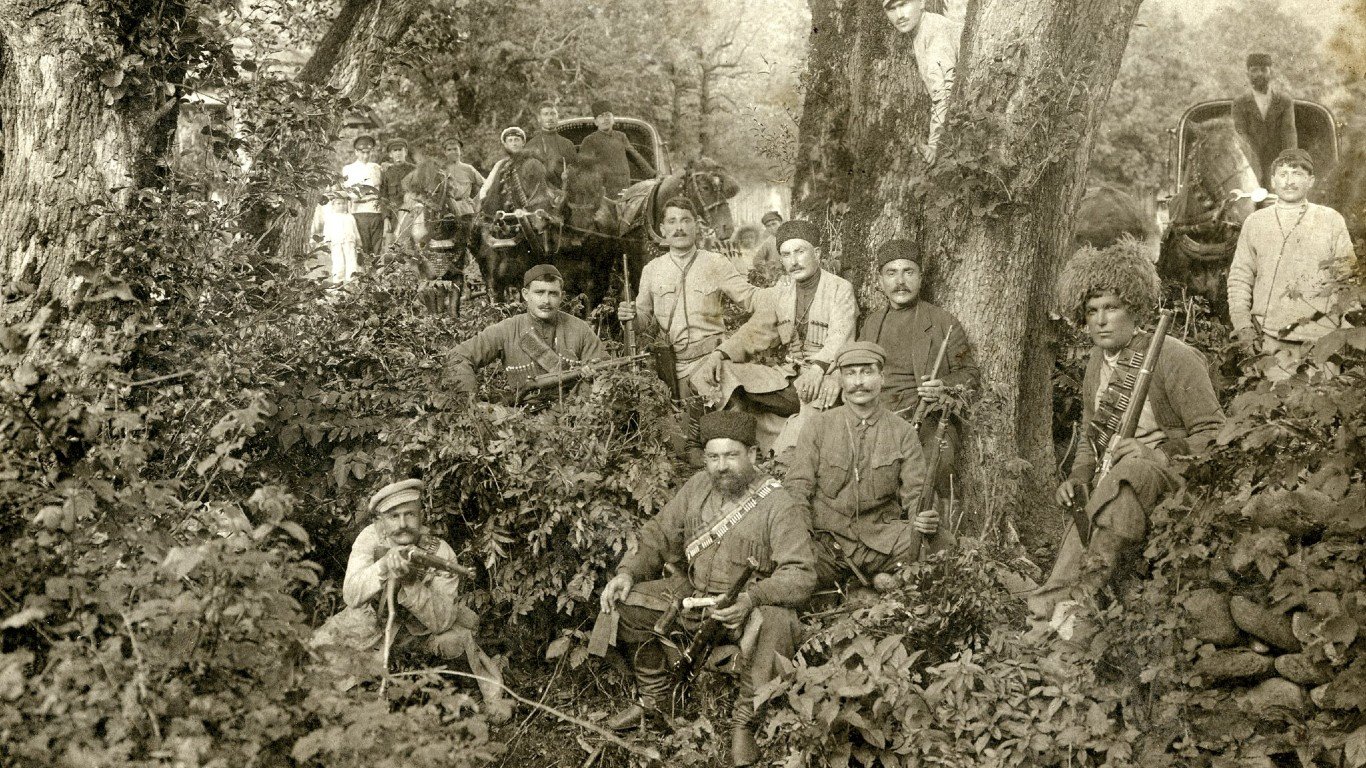
16. Anti-Bolshevik Uprising in Georgia (August Uprising)
> Year(s): 1924
The Anti-Bolshevik Uprising in Georgia, also known as the August Uprising, was an unsuccessful attempt to expel Soviet Russian control in the Georgian Soviet Socialist Republic in 1924. The insurrection was led by a group of anti-Soviet political organizations, including the Mensheviks. The Soviet reaction was swift and brutal. The Red Army repressed the population and carried reprisals, killing whole families. The uprising was one of the last major rebellions against the early Soviet government.
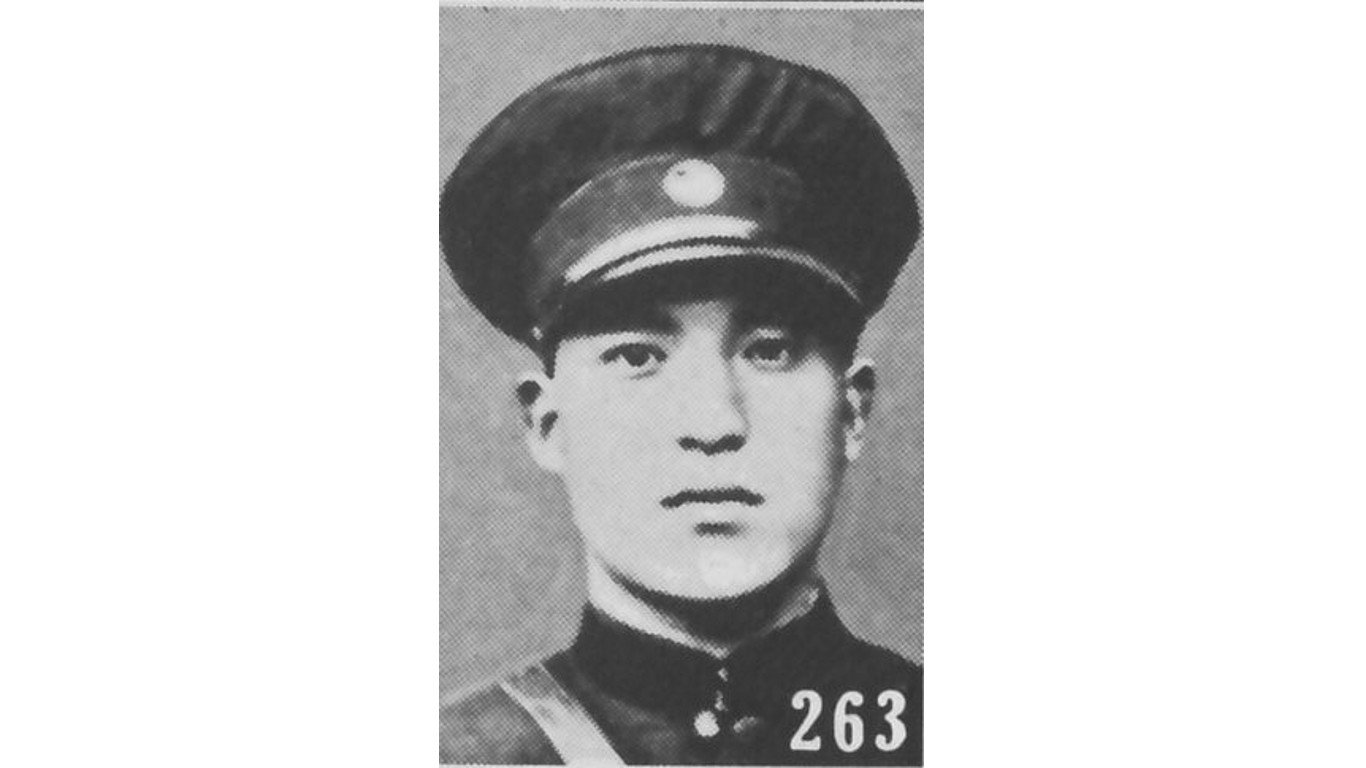
15. Battle of Xinjiang
> Year(s): 1937
Before the outbreak of World War II, about 5,000 Soviet Red Army troops moved into Xinjiang in China to aid Sheng Shicai, a Chinese war lord, whose troops had been beaten by Muslim rebels in earlier in 1937. In August, the Russian units and provincial Chinese troops decisively defeated the rebels. The Soviet Union had backed the non-communist Chinese side to oppose the growing influence of Japan in the region.
[in-text-ad]
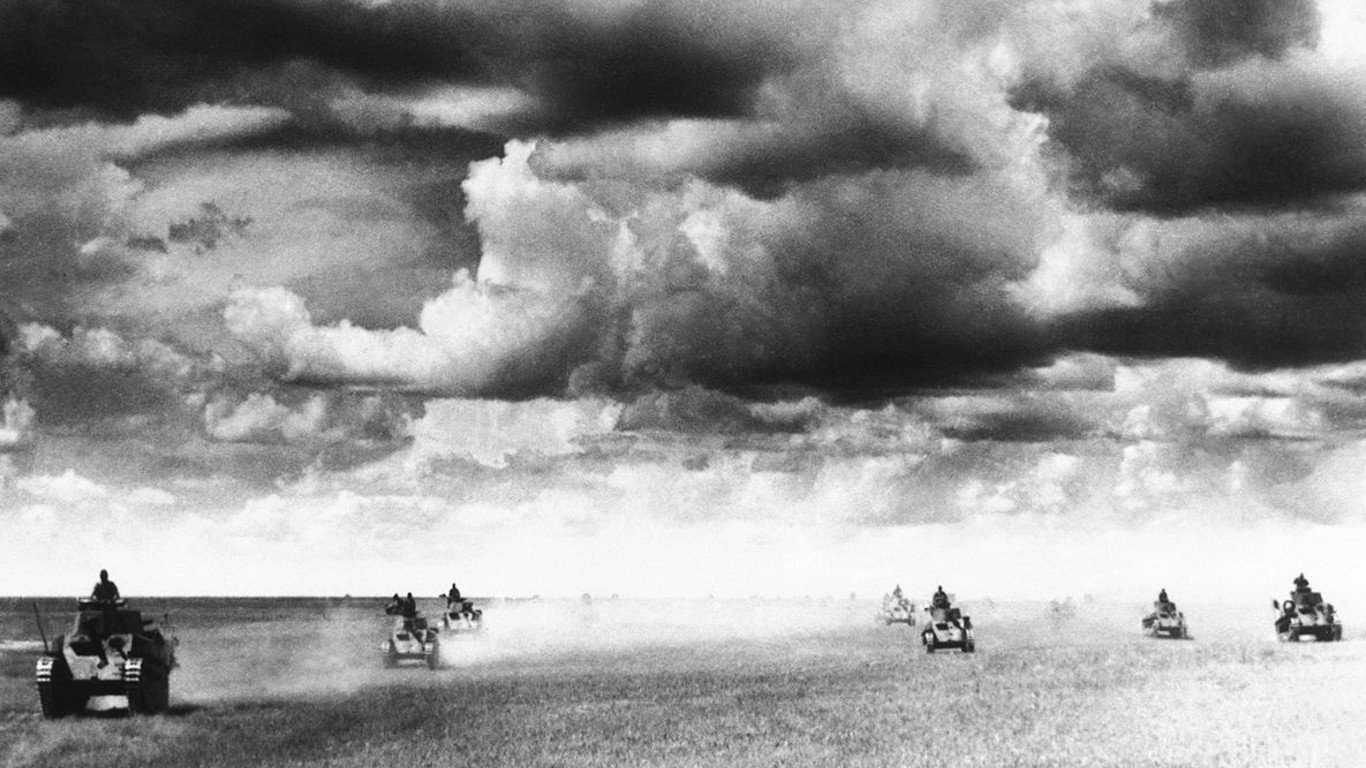
14. Border Incidents with Japan
> Year(s): 1938-1939
Japan began its occupation over what is today Manchuria in northern China in 1931. This would lead to a dispute with Russia over their 3,000-mile border, and relations deteriorated further after the Japanese invasion of China in 1937. Japan was outgunned and lacked tanks but had because of its superior leadership and determination by its troops, Japan won the initial battles. Then Georgy Zhukov, who would eventually led the Red Army to triumph over the Nazis in World War II, came to lead the Russian troops and Japan was defeated.

13. Invasion of Poland
> Year(s): 1939
The Soviet Union and Nazi Germany signed a non-aggression pact on Aug. 23, 1939, a week before Germany unleashed blitzkrieg on Poland and the start of World War II in Europe. The pact contained a secret provision for spheres of influence in Eastern Europe that both sides would accept after Germany conquered Poland.
The Soviet Union would acquire the eastern half of Poland, along with Lithuania, Estonia and Latvia. Just over two weeks after Germany invaded Poland, the Soviet Union attacked Poland from the east on Sept. 17. Worn down after fighting with the Germans, the Poles offered little resistance to Soviet incursion. German and Soviet soldiers met in the middle of Poland, and the Soviet Union took control over most of the country.
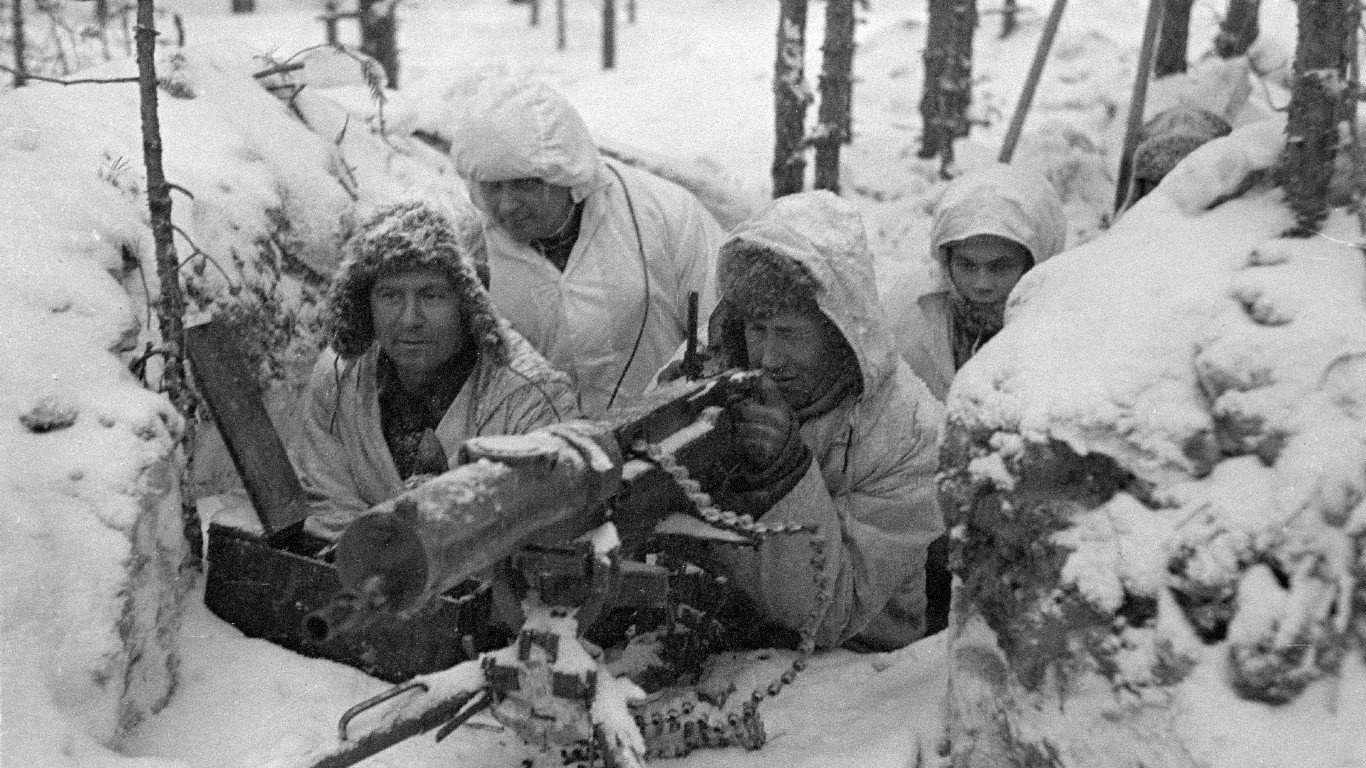
12. Winter War
> Year(s): 1939-1940
The Winter War was a conflict fought between Finland and the Soviet Union that began in the winter of 1939. The Red Army was poorly led and inadequately prepared to fight in winter conditions, and the smaller Finnish army dealt the Soviet troops a bitter defeat.
The Soviet Union regrouped and changed leadership. The Red Army eventually overpowered the Finns who lost 11% of their territory. The poor performance of the Soviet military emboldened Hitler to invade the Soviet Union in 1941.
[in-text-ad-2]
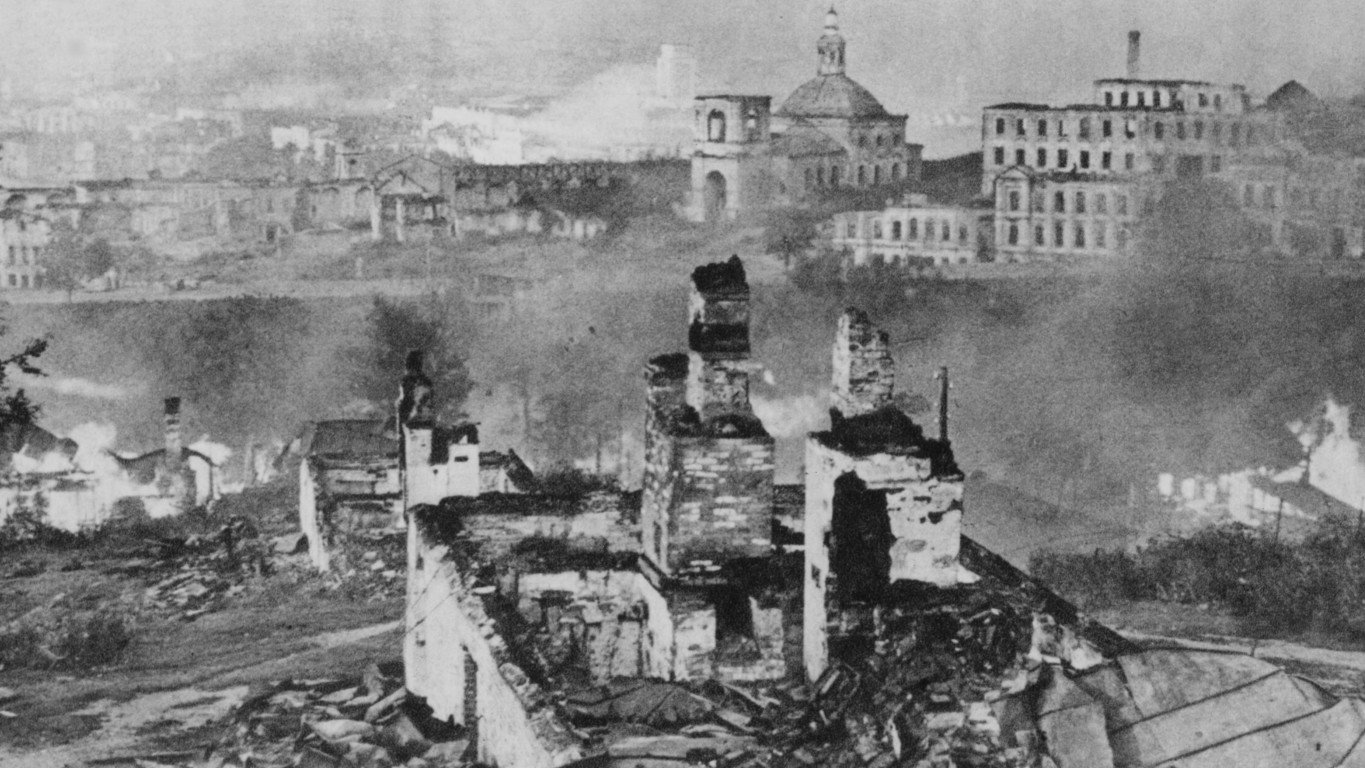
11. Soviet Union in World War II
> Year(s): 1939-1945
Nazi Germany violated the non-aggression pact forged with the Soviet Union and invaded the Soviet Union on June 22, 1941. It was an ideologically driven conflict in which Nazi leader Adolf Hitler intended to wipe out communism and expand the Nazi empire in the east.
The Soviet Union suffered the most of any nation in World War II, with as many as 27 million fatalities. The Soviet Union reorganized its military and replenished leadership that had been purged by Soviet leader Joseph Stalin before the war. The Red Army defeated Nazi Germany in 1945 and the Soviet Union emerged as a superpower.
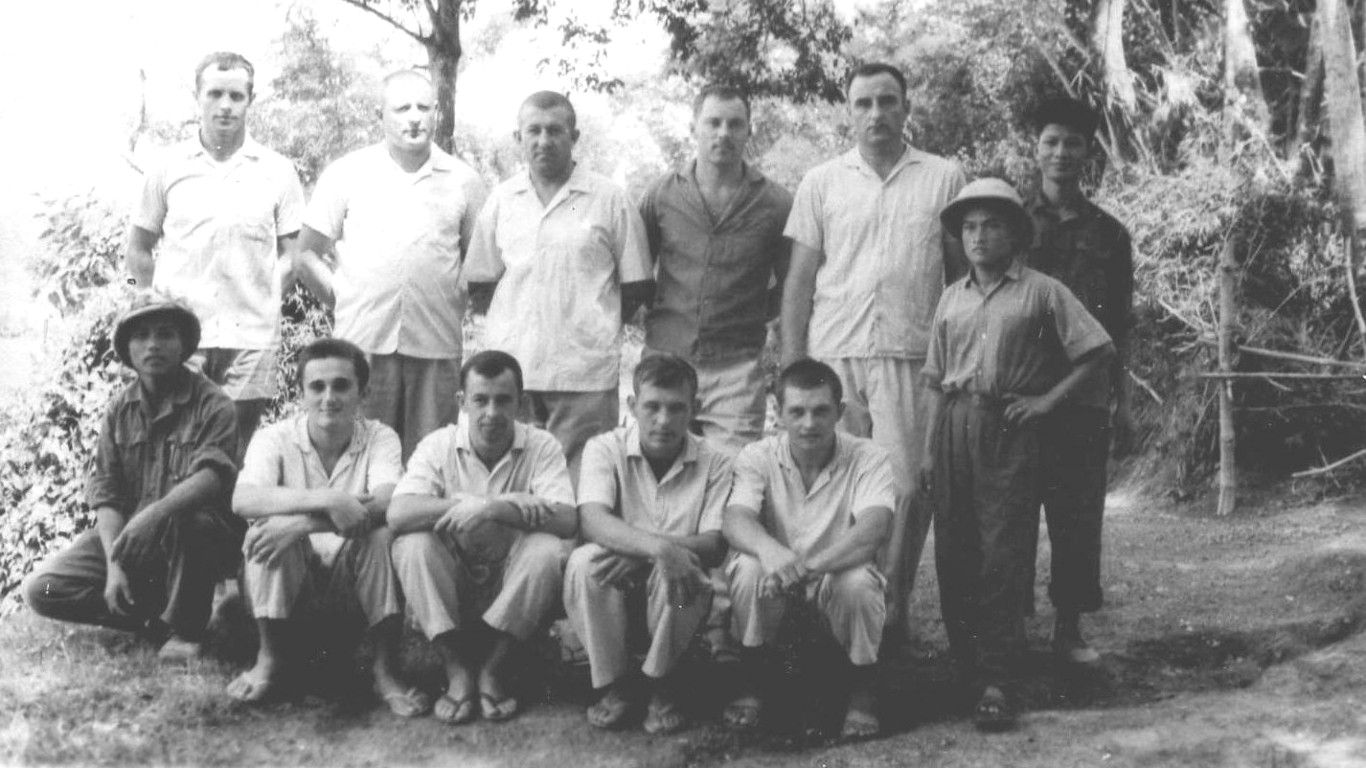
10. Soviet Union and the Vietnam War
> Year(s): 1945-1975
In 1991, the Soviet Union revealed its role in the Vietnam War. It said there were as many as 3,000 Soviet Army troops stationed in Vietnam during the war, as well as special forces deployed in clandestine operations. Soviet spy ships warned the North Vietnamese about US Air Force bombing missions. The Russians gave their communist allies military equipment and medical supplies.
[in-text-ad]
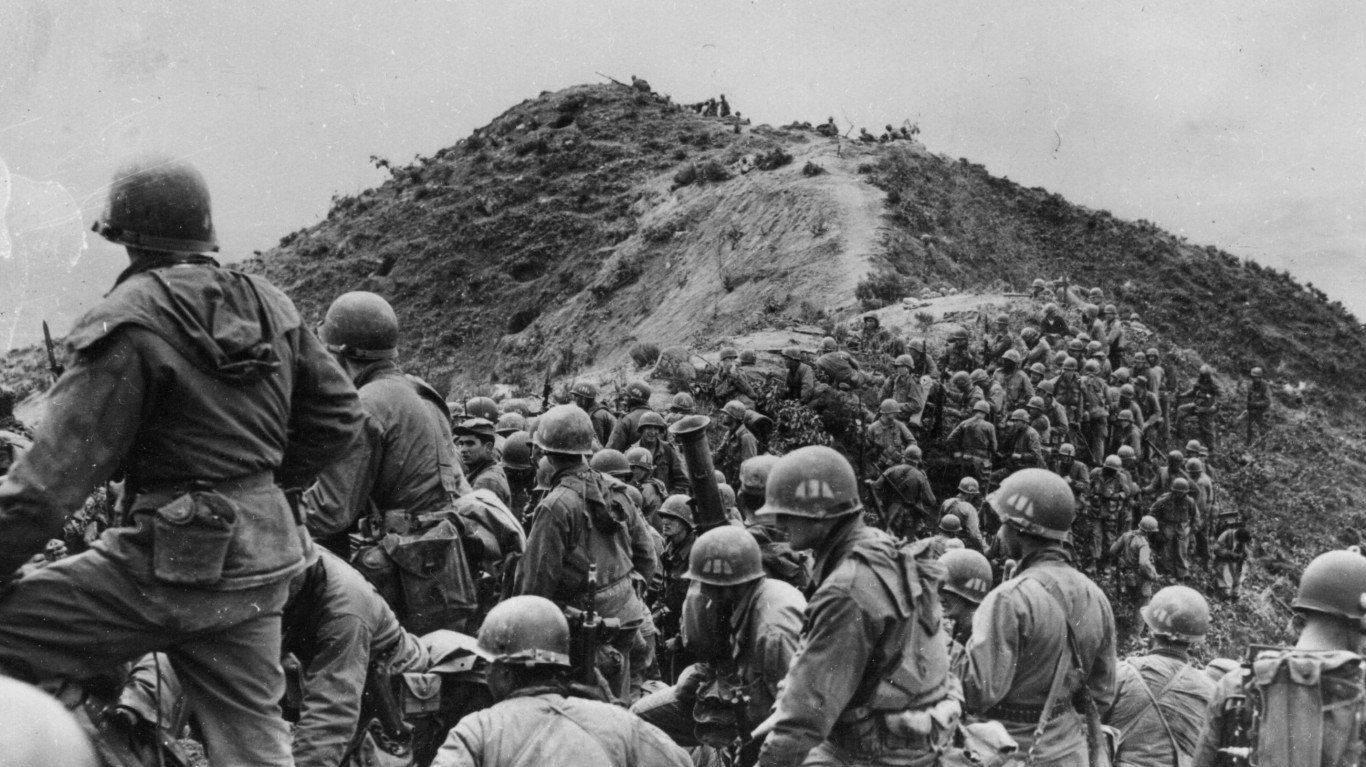
9. Korean War
> Year(s): 1950-1954
The Soviet Union took a backseat to China in terms of supporting North Korea’s invasion of South Korea in 1950, though some Soviet pilots engaged in air combat with US aircraft. The Soviet Union chose not to become engaged in the land campaign out of fear of escalating the conflict. It did provide military and medical supplies to North Korea.
8. Berlin Uprising
> Year(s): 1953
East German workers, tired of efforts by the Soviet-backed regime to boost production without raising wages, revolted in June 1953. It was one of the first open rebellions against communist rule after World War II. About 1 million East Germans protested and rioted across East Germany. The United States provided various forms of aid for those in rebellion, but the uprising fizzled out in October. The aftermath of the rebellion was a large exodus of the East Germans to the West â the so-called brain drain â that culminated in the construction of the Berlin Wall in 1961.
7. Hungarian Rebellion
> Year(s): 1956
The death of Soviet leader Joseph Stalin and the subsequent criticism of his regime by his successors seemed to herald an era of greater openness among the Soviet bloc of nations, among them Hungary. This raised expectations and sparked a rebellion in October of 1956.
The rebels succeeded early on, with Hungarian Premier Imre Nagy agreeing to a multiparty system and national neutrality. He appealed to the West for support but the West did not want to risk a confrontation with the Soviet Union. On Nov. 4, the Soviet Union invaded Hungary and squashed the revolt, and Nagy was executed for treason two years later.
[in-text-ad-2]
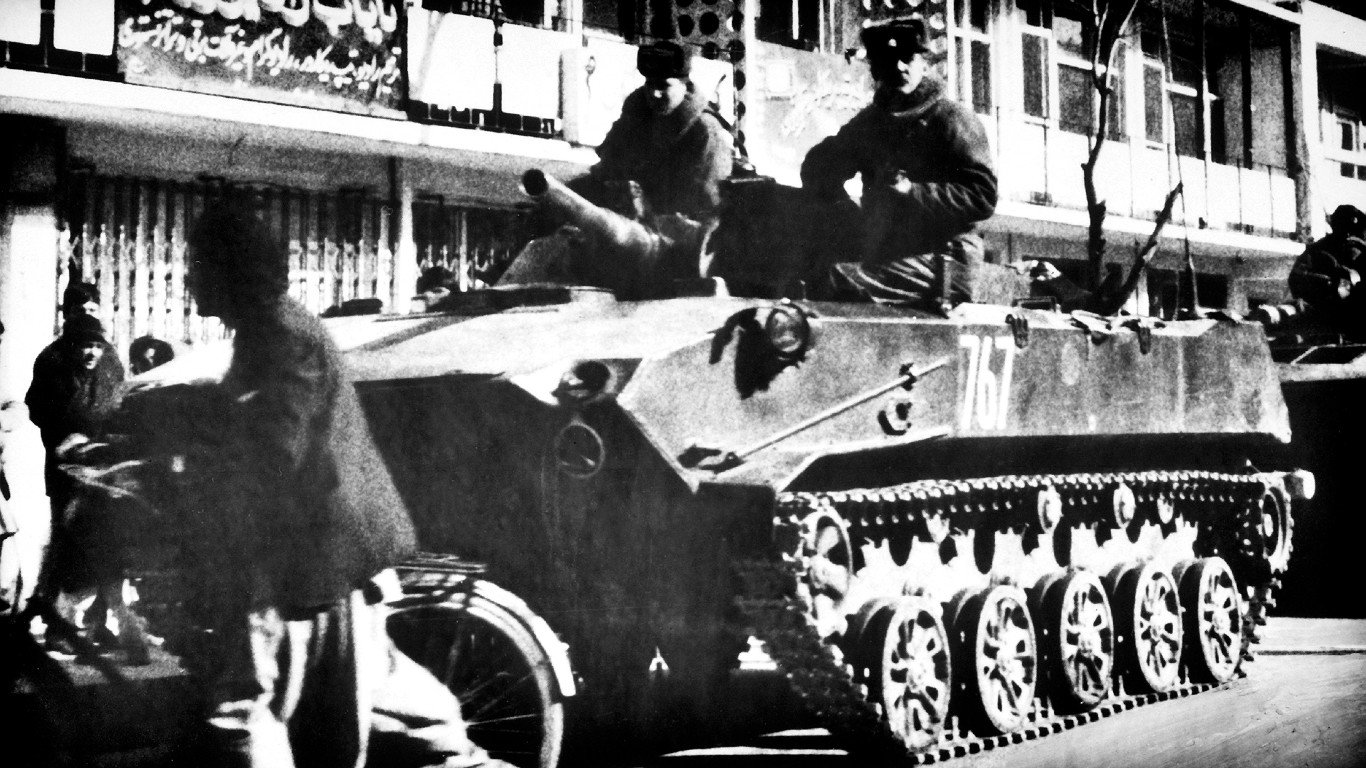
6. Afghanistan War
> Year(s): 1979-1989
Since the days of the Russian Empire, Afghanistan had always been critical to Russia’s geopolitical strategy, and in 1979, the Soviet Union was concerned Afghanistan might draw closer to the US. The Soviet Union invaded Afghanistan in 1979 under the pretext of the so-called Brezhnev doctrine that maintained that one communist regime was honor-bound to support another, weaker one, and use military force if necessary.
When the last Soviet troops withdrew in 1989, the Soviet Union had suffered a humiliating defeat that killed 1 million civilians and the lives of 125,000 Afghan, Soviet and other combatants.
5. Tajikistan Civil War
> Year(s): 1992-1997
After the dissolution of the Soviet Union in 1991, an independent Tajikistan came into existence. But soon fighting broke out between ethnic groups that included liberal reformists and Islamists underrepresented in government and the national government led by President Rahmon Nabiyev supported by Russia and Uzbekistan.
The opposition made early gains and at one point captured Nabiyev and forced him to resign at gunpoint. Uzbekistan President Islam Karimov feared the conflict would spill over into his country and ordered his military to step in to restore order in Tajikistan. That added to the chaos. A UN-backed armistice ended the war in 1997 and a tenuous power-sharing agreement was reached. The conflict left up to 100,000 dead.
[in-text-ad]
4. First Chechen War
> Year(s): 1994-1996
As a result of the First Chechen War, Chechnya gained greater autonomy from Russia and formed the Chechen Republic of Ichkeria. Most Chechens are Muslim, and the conflict took on a religious edge, as the rebels were joined in their fight by Muslims from other countries.
The brutal war was unpopular in Russia, which was repulsed by the Chechens in mountainous regions despite its decided advantage in manpower and weapons. The Russian government declared a ceasefire in 1996 and signed a peace treaty a year later. Civilian deaths were estimated at up to 100,000, and another 500,000 were uprooted by the war.
3. Second Chechen War
> Year(s): 1999-2000
The Second Chechen War between Russia and the Chechen Republic of Ichkeria in Chechnya and the North Caucasus border. In effect, this conflict was an attempt to reverse the result of the first Chechen War that led to the creation of a separate Chechen state. The war was instigated by Islamist fighters who went into Russia’s Dagestan area and declared it an independent nation and called for holy war.
This time the rebels lacked the support of local people and Russia had more success. The war devolved into a guerrilla conflict, with Chechens conducting terrorist attacks on the Russian homeland. Russia succeeded in establishing a pro-Russian government in Chechnya and brought it into the Russian fold.
2. Russo-Georgian War
> Year(s): 2008
Deteriorating relations between Russia and the small Caucasian nation of Georgia led to an intense shooting war in August of 2008. Tensions were rising because US President George W. Bush had backed Georgia and Ukraine membership in NATO. Both nations border Russia. Pro-Russian separatists took control of the regions of Abkhazia and South Ossetia, about 20% of Georgia.
Fighting broke out on Aug. 1 when separatists started shelling Georgian villages. Georgian troops launched an attack and Russian forces responded, seizing most of the territory in dispute. A ceasefire was declared on Aug. 13. The war resulted in Russian recognition of the independence of Abkhazia and South Ossetia that Russia then occupied.
[in-text-ad-2]
1. Russo-Ukrainian War
> Year(s): 2014-Present
Russia and Ukraine have always had a complicated history, and in 2014, it got more complicated. Russia annexed Crimea that year â Crimea had been given to Ukraine by the Soviet Union in 1954. Since 2014, Russia has been conducting a low-level war in the eastern Ukrainian provinces of Luhansk and Donetsk where many Russians live.
Russia invaded Ukraine in February 2022 under the pretext of protecting the Russian-speaking areas of Ukraine. Russian leader Vladimir Putin wants to install a pro-Russian government and keep Ukraine from joining NATO.
Sponsored: Want to Retire Early? Here’s a Great First Step
Want retirement to come a few years earlier than you’d planned? Or are you ready to retire now, but want an extra set of eyes on your finances?
Now you can speak with up to 3 financial experts in your area for FREE. By simply clicking here you can begin to match with financial professionals who can help you build your plan to retire early. And the best part? The first conversation with them is free.
Click here to match with up to 3 financial pros who would be excited to help you make financial decisions.
Thank you for reading! Have some feedback for us?
Contact the 24/7 Wall St. editorial team.
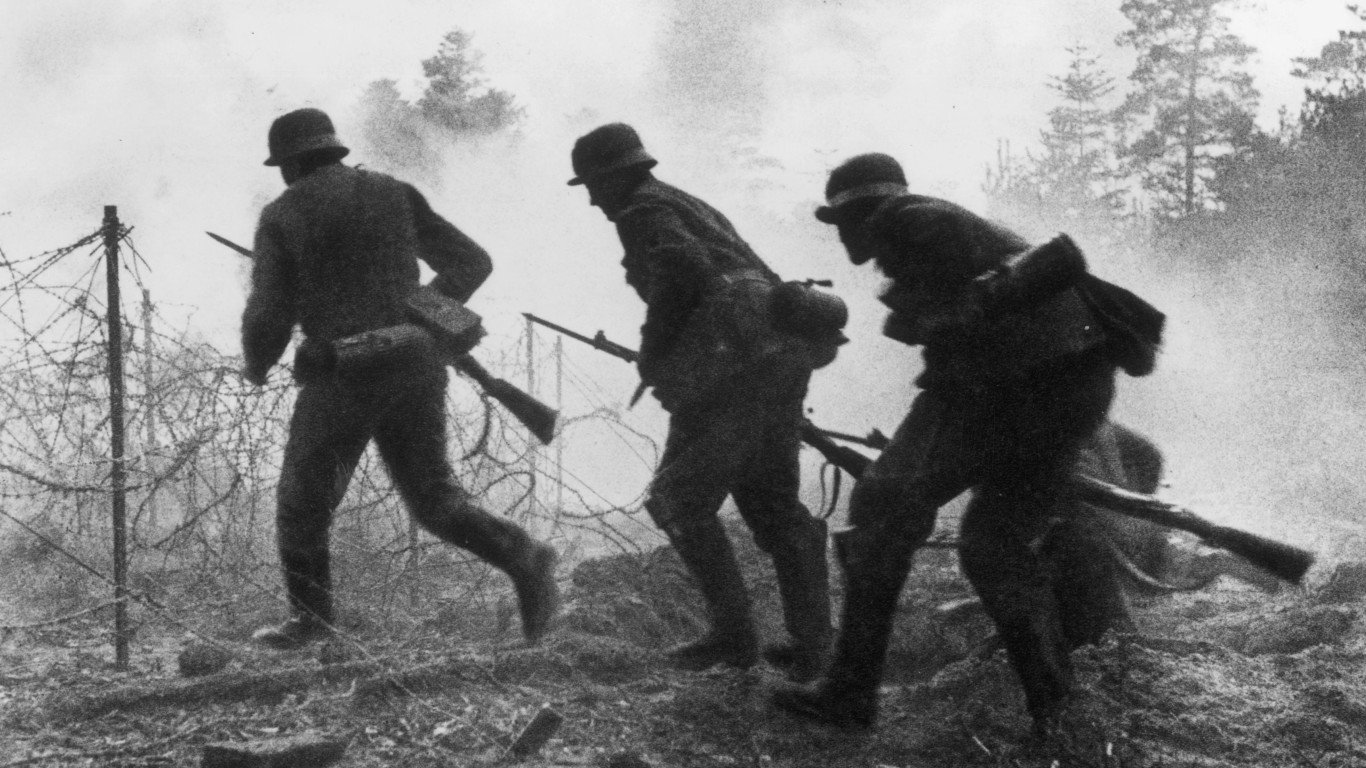 24/7 Wall St.
24/7 Wall St.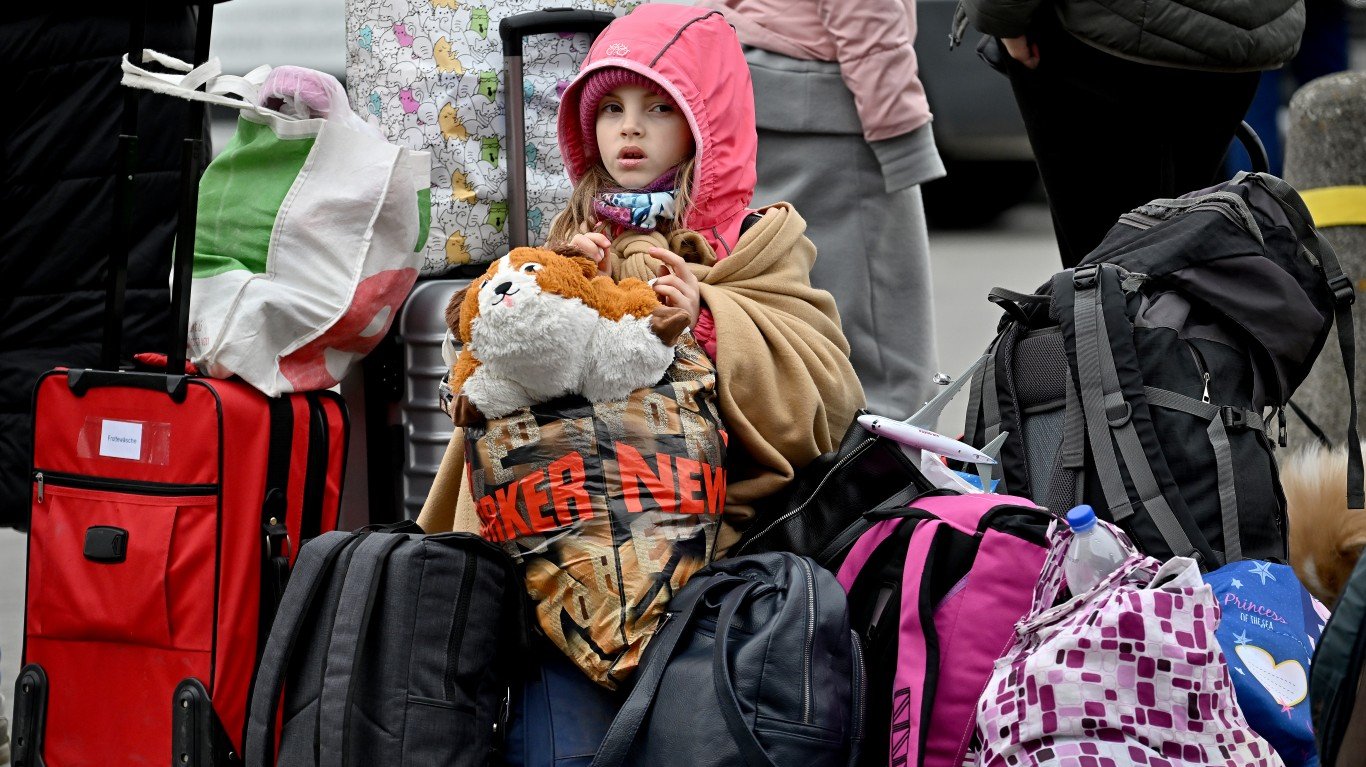 24/7 Wall St.
24/7 Wall St.
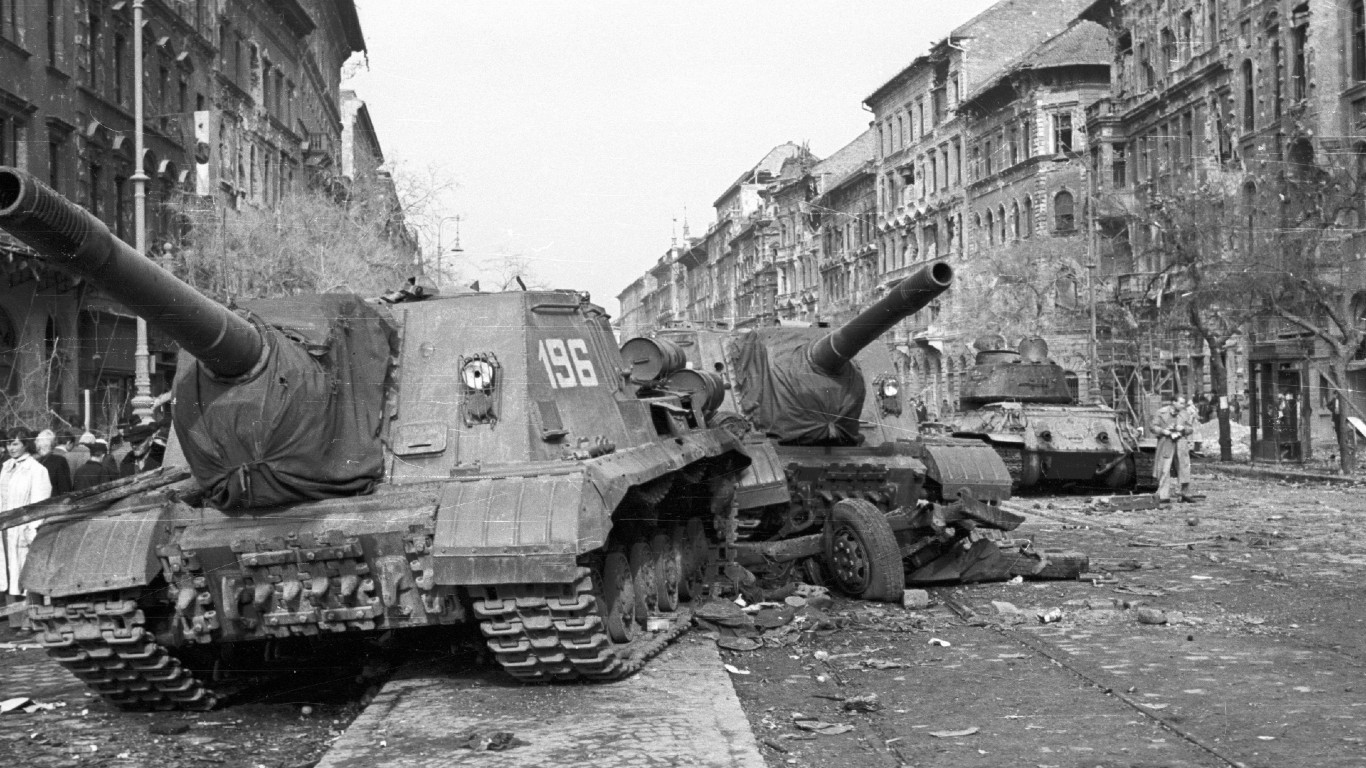
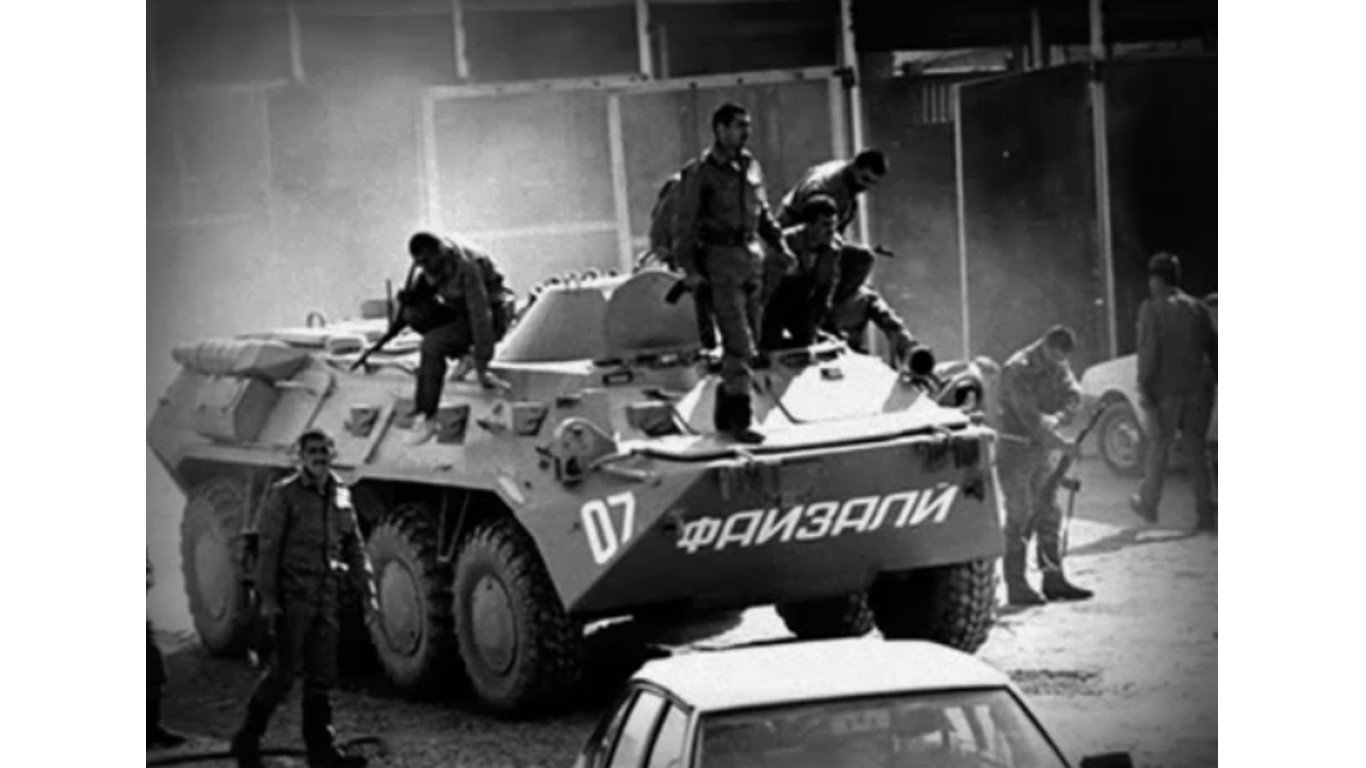

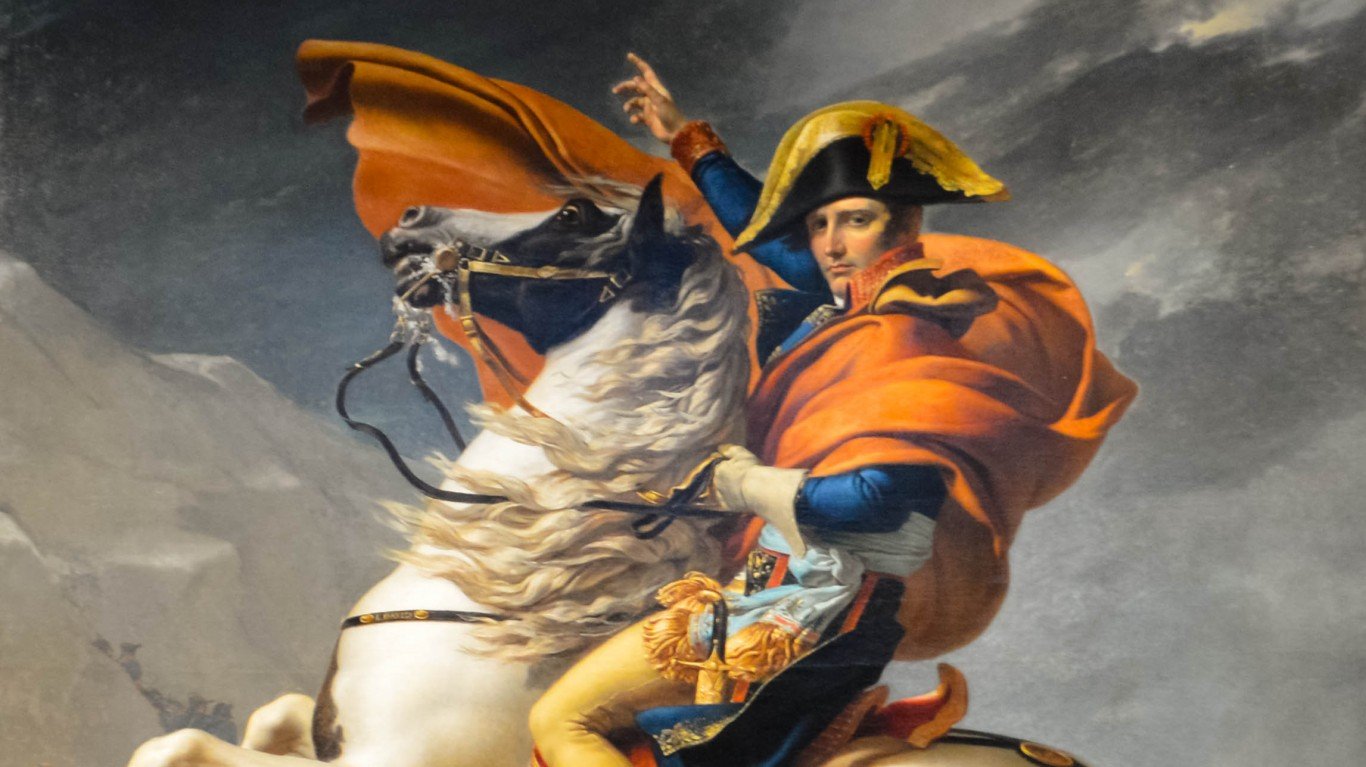 24/7 Wall St.
24/7 Wall St.